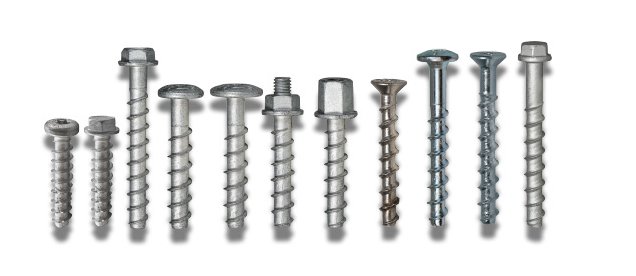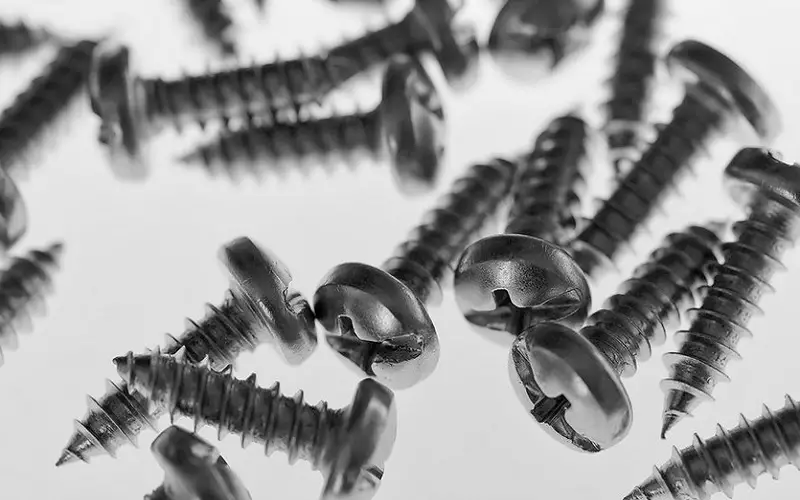For 3/4 plywood, use #8 or #10 screws that are 1 to 1.25 inches long. When securing 3/4 plywood, it is crucial to choose the correct size screw to ensure a secure and stable connection.
Using screws that are too short may not provide enough holding power, while screws that are too long can split the wood. By selecting #8 or #10 screws that are 1 to 1. 25 inches in length, you can effectively fasten 3/4 plywood with confidence.
Whether you are working on a DIY project or a professional construction job, understanding the right screw size for 3/4 plywood is essential for achieving strong and durable results.
Contents
Understanding Plywood Grades
Plywood grades play a crucial role in determining the appropriate screw size for 3/4 plywood. Understanding these grades helps ensure a secure and stable connection for your wood projects. Correct screw selection is vital for structural integrity and long-lasting performance.
What Are Plywood Grades?
Plywood is a versatile material commonly used in construction, furniture making, and various other applications.
The quality and characteristics of plywood can vary depending on its grade.
Understanding plywood grades is essential when choosing the right plywood for your project.
There are several grading systems for plywood, but one of the most widely used is the APA (American Plywood Association) grading system. This system categorizes plywood into different grades based on its appearance and performance.
The APA grading system uses letters to indicate the quality of the plywood. The highest grade is A, while the lowest grade is D.
Each grade has specific requirements in terms of the number and size of knots, defects, and overall appearance.
Here is a breakdown of the APA Plywood Grades:
| Grade | Description |
|---|---|
| A | High-quality appearance with minimal defects |
| B | Good appearance, relatively free of defects |
| C | May have some knots and defects, but still usable |
| D | Visible knots, defects, and uneven patches |
Higher grade plywood typically has a smoother surface and fewer visible defects, making it suitable for projects where appearance is important.
Lower grade plywood may have more knots and imperfections but can still be used for structural purposes where aesthetics are less critical.
It’s important to note that plywood grades can vary between manufacturers, so it’s always best to check the specifications and grading system provided by the manufacturer.
Understanding Plywood Grades: Summary
- Plywood grades indicate the appearance and quality of the plywood.
- The APA grading system is widely used and categorizes plywood into grades A, B, C, and D.
- Higher-grade plywood has a smoother surface and fewer defects, while lower-grade plywood may have more imperfections but is still usable for structural purposes.
- Check the specifications and grading system provided by the manufacturer, as grading systems may vary.
Determining The Thickness Of Plywood
Standard Plywood Thickness
- 3/4 inch plywood commonly used in construction.
- Corresponds to a nominal thickness of 23/32 inch.
- Standard size screws for 3/4 inch plywood are 1-1/4 to 1-1/2 inches long.
Metric Plywood Thickness
- Metric equivalent of 3/4 inch plywood is approximately 18mm.
- For 18mm thick plywood, use screws about 32-38 mm in length.
Calculating Screw Size For Plywood
When it comes to working with plywood, it’s essential to use the right size of screw to ensure a secure and professional finish.
Calculating the screw size for plywood involves considering several factors to help determine the appropriate length and diameter for a specific project.
Understanding these factors will ensure that the screws effectively secure the plywood without causing damage or compromise to its integrity.
Factors To Consider
When choosing the right size of screw for plywood, several important factors should be taken into consideration to ensure a successful and durable outcome.
These factors include the thickness of the plywood, the type of wood, the weight-bearing capacity, and the specific application of the plywood. By carefully evaluating these factors, you can determine the ideal screw size for your individual project.
Using The Right Length And Diameter
Once the relevant factors have been considered and evaluated, it’s important to ensure that the chosen screw has the right length and diameter to effectively secure the plywood.
The length of the screw should be calculated based on the combined thickness of the materials being joined, ensuring that the screw penetrates sufficiently into the substrate without protruding or causing damage on the other side.
The diameter of the screw must also be considered, as it should be appropriate for the thickness and weight-bearing capacity of the plywood. Choosing the correct length and diameter will ensure that the screws provide the necessary strength and support for the plywood.
Choosing The Right Screw Type
When it comes to selecting the appropriate screw for 3/4″ plywood, it’s essential to consider the type of screw that best suits the application.
Understanding the differences between wood screws, drywall screws, and decking screws can help ensure a secure and long-lasting connection.
Wood Screws
Wood screws are designed with a sharp point and a coarse thread, making them suitable for securing plywood to wood framing. The threads on these screws aggressively grip the wood, providing strong fastening that resists pullout.
Drywall Screws
Drywall screws, despite their name, are not ideal for use with plywood due to their fine threads, which are designed for gripping drywall.
These screws may not provide the necessary holding power for plywood applications and are best suited for their intended purpose – installing drywall.
Decking Screws
Decking screws are specially designed for outdoor applications and are often coated for corrosion resistance. While these screws are excellent for use with decking materials, their aggressive threads and corrosion-resistant properties make them a suitable choice for attaching plywood to exterior structures.
Preventing Splitting And Damage
Preventing splitting and damage when using screws with 3/4 plywood is essential to ensure a strong and secure construction.
By following proper techniques such as pre-drilling holes, using pilot holes, and counterboring/ countersinking, you can avoid potential issues that may arise during the fastening process.
Pre-drilling Holes
Pre-drilling holes in 3/4 plywood before inserting screws helps prevent splitting and damage to the wood. This involves creating a guide hole slightly smaller than the screw size to allow for a smoother insertion of the screw.
Using Pilot Holes
Using pilot holes is another effective method to prevent splitting when fastening screws into 3/4 plywood. A pilot hole is a smaller hole drilled into the wood before inserting the screw, allowing for better control and reducing the risk of splitting.
Counterboring And Countersinking
Counterboring and countersinking involve creating space for the screw head to sit flush with the surface of the plywood. This technique not only prevents damage but also provides a clean and professional finish to your project.

Additional Tips For Perfect Fastening
Selecting the appropriate screw size for fastening 3/4″ plywood is crucial. Always choose a screw that is 1/4″ longer than the combined thickness of the materials being fastened for a secure and durable hold.
It’s also important to consider the type of wood and intended application when determining the size of the screw. When it comes to fastening plywood, using the correct size screw is crucial.
However, there are a few additional tips that can help ensure a perfect fastening job. These tips will not only enhance the durability of your project but also save you time and effort in the long run.
Using The Correct Torque
Applying the correct torque while fastening plywood is important to prevent over-tightening or under-tightening the screws.
Over-tightening can cause the plywood to split or create bulges, while under-tightening can lead to loose connections that compromise the integrity of the project. To ensure the correct torque, you can use a torque wrench or an electric drill with adjustable torque settings.
Start by tightening the screw snugly and then gradually increase the torque until you achieve the desired level of tightness. Remember, each plywood thickness may require a different torque setting, so it’s important to adjust accordingly.
Using Washers
Another tip for perfect fastening is to use washers along with your screws. Washers are small metal discs that sit between the screw head and the plywood surface.
They help distribute the load of the screw over a larger area, reducing the risk of the screw sinking into the plywood over time.
When selecting washers, ensure they are the appropriate size for the screw you are using and that they have a wide enough diameter to provide sufficient support.
Placing a washer under the screw head will provide added stability and prevent the plywood from warping or splitting.
Considering Weather Resistance
When choosing the size screw for your 3/4-inch plywood project, it’s essential to consider weather resistance. If your project will be exposed to outdoor elements or high moisture areas, using corrosion-resistant screws is crucial to prevent rust and deterioration over time.
Opt for screws made from stainless steel or coated with materials such as zinc or polymer. These screws offer better resistance to moisture, preventing them from rusting or weakening under harsh conditions.
By selecting the appropriate screws, you will ensure the longevity and structural integrity of your plywood project.

Frequently Asked Questions Of What Size Screw For 3 4 Plywood
How Long Of A Screw Do I Need For A 3 4 Inch Board?
For a 3/4 inch board, use a screw length that is slightly longer than the combined thickness of the materials being joined.
What Screws To Use For 3 4 Wood?
For 3/4 wood, it is recommended to use 1 1/2-inch long screws. These screws provide secure and reliable fastening for the wood.
What Screws Should I Use For Plywood?
For plywood, it’s best to use screws that are specifically designed for woodworking. These screws provide strong and secure fastening.
Look for screws with sharp points and deep threads to prevent splitting and ensure a tight hold. Using screws that are slightly shorter than the thickness of the plywood is recommended for optimal grip.
Can You Screw Into The Edge Of 3 4 Plywood?
Yes, you can screw into the edge of 3/4 plywood, but it’s not recommended for heavy loads. Use proper techniques to avoid splitting.
Conclusion
Selecting the right screw size for 3/4 plywood is crucial for your woodworking projects. Remember to match the screw length with the thickness of the plywood to ensure strong and secure joints.
By understanding the relationship between screw sizes and plywood thickness, you can achieve professional results in your woodworking endeavors.

